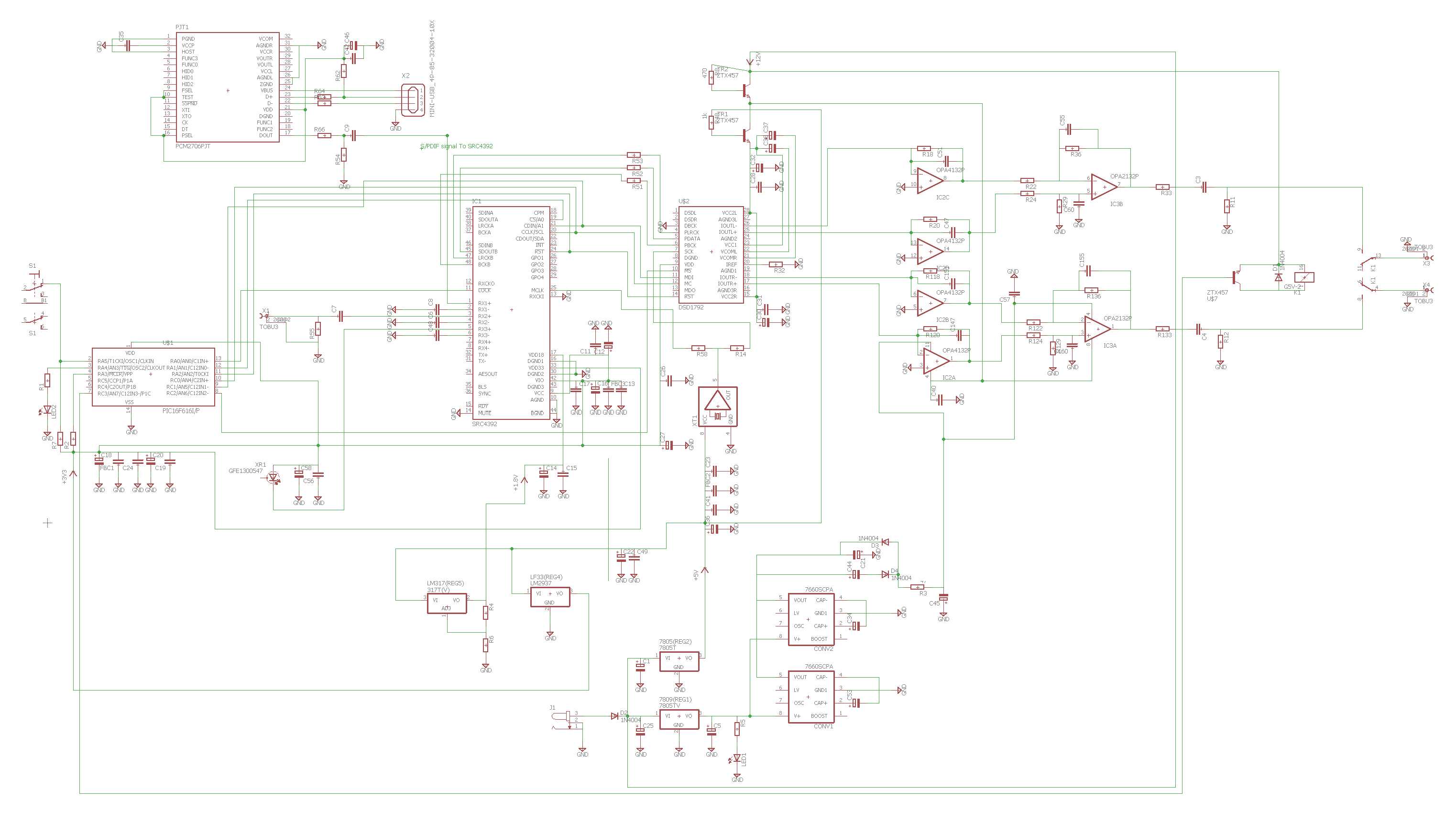FalseMetal666
New Head-Fier
Does anybody have a sense of which electrolytics are supplying the ICs? I'd like to replace with 220uf but have no idea how to trace the board. Trace side attached for reference.



original
Quote:
The V-DAC schematic that Barmanekm sent to me is here for anyone to download:
http://www.mediafire.com/?bz5c276k2cb2y0o
TP's supplies might work quite well for this, though I don't know what's their default voltage. For the V-DAC's analog chips you can use +/- 12 to 15v. But you will have to uninstall or desolder the switching booster that powers those chips.

Even with the original OPA2132 chip on the V-DAC you would have low offset. Look at the datasheet.
http://www.ti.com/lit/ds/symlink/opa132.pdf
The output caps are sometimes a precaution, even for protection from the following stage eventual DC offset.
But if that stage already has an input cap, it's not necessary. As I already had said, and I took it from Ben Duncan, you should try to design the preamp stages or sources for no caps at inputs or outputs, and put all your money on the power amp input cap. There you should you use the best you can afford, like a propylene os polystyrene type.
If you click on the image it will zoom in. The bypass caps are C40 and C57. That is for the quad and dual output ICs,
They seem to be just ceramics, so replacing them with 100uF electrolytics bypassed with 1uF film caps on the copper side might be a good thing.
What's the C30 value on the DSD 1792?
It might be a good thing for you to download the free Eagle version and open the schematic with it. Then you can click on the components and put the values in. Better than drawing them yourself. If possible add the other passive values too.
Then check them with the datasheet. The resistors around the output ICs I wouldn't touch, except if you go for 0.1% precision types. They were certainly hand picked by MF and should be fine. You already changed the filter caps, which is the good thing to do there.
A trick you can try (or even plainly do that only) is not to remove the output caps: just wire bypass them. So if there are any noises you can leave the caps. There shouldn't be, but...
As you can see there's a relay after the cap that controls the RCA outputs, and on CDs there might be a very slight click noise.
Once I had a Sony CD player, which I intend to use again, where I modified the output chip. I don't remember which it was, but it probably wasn't a low offset type. As a result it had very low clicking noises when the CDs began to play.
But the results were so staggering after I bypassed the cap, that I didn't care. It's quite likely I will replace the IC again with a more modern low offset type and see what happens.
If I remember well it didn't have a coaxial interface, to connect it with a DAC, but you could add one. That would be a good comparison to check. The Sony DACs where Burr Brown PCM63s, which were considered one of the best.
This week I received my Topping D50, so I will play with it a bit. The output chips are OPA1612, which some complained sounding a bit "metallic". Burning them in for some time seems to improve on that, but I'm planning some "out of the box" changes, so as not to ruin things inside the very nice box.
If you already have those 220uF for the Burston, that power pins bypass is shared between the quad and the dual (Burston) chips. If you can replace the 0.1uF bypasses with 1uF types, as they might improve things better .
But I think you should try replacing the output bypasses with a 220uF + 1uF combo for the bypasses. You solder the 220uF on the top side, and the 1uF cap on the copper side. The 220uF cap should be good quality, and may improve the bass.
There are two sets of capacitors for the DAC: C28-C32 and C30-C31. Each set is close to pins 15 and 28. This is very important: the bypass caps being close to the pins.
That should also be the case with the output ICs bypasses. They sharing bypass caps and with such small values seems like unnecessary savings. The ideal thing might be to try two caps for each and also increase the larger value up to 470uF, but listening to the DAC when you increase the values from 100uF up to 470uF. Then you can listen to any change.
For the DAC bypassing, going up to 100uF could be good thing, but this time using Os-Con caps. The ones you find now are SMD types, but you need through hole types. Perhaps these might do:
https://www.ebay.com/itm/10-pcs-SAN...906630?hash=item3f7d868186:g:72cAAOSwblZZKPQH
Os-Cons are usually recommended for digital stages, not for analog ones.
About the output caps: do not extract them if you can. Just solder a wire between the pins. The ideal thing might be for you to clip alligator clips between the pins to bypass them, and listen to the results with and without them.
You could even bypass the output relay entirely for this test, using alligator clips (or even two coaxial cables) to go from R11 and R12 directly to the output RCAs. That would eliminate the relay contact.
